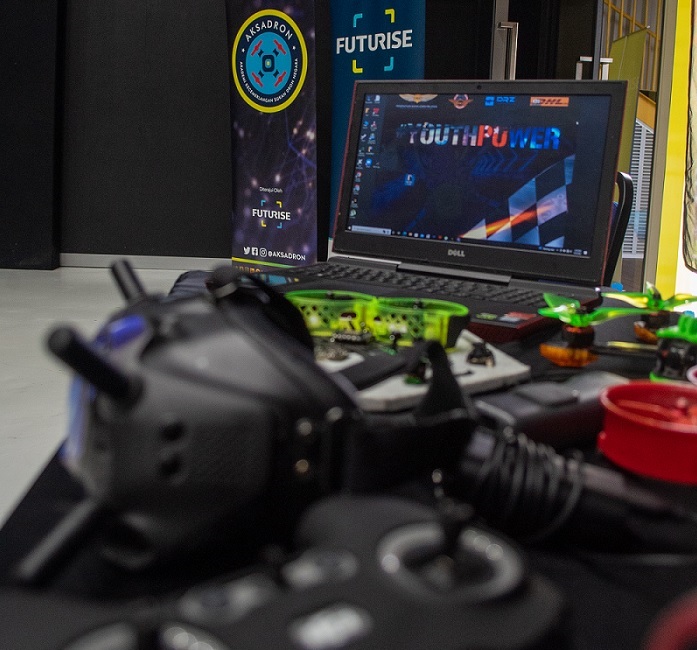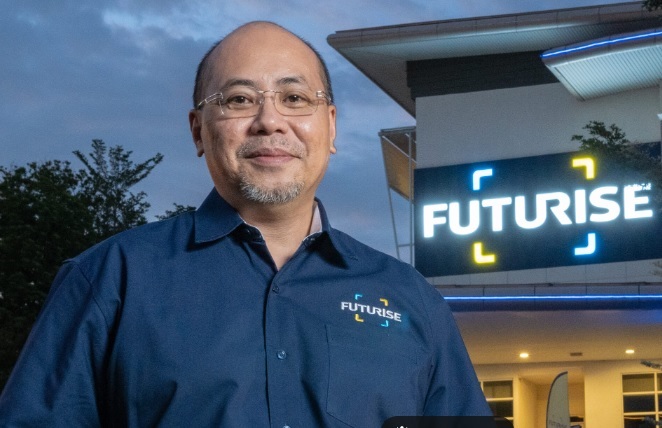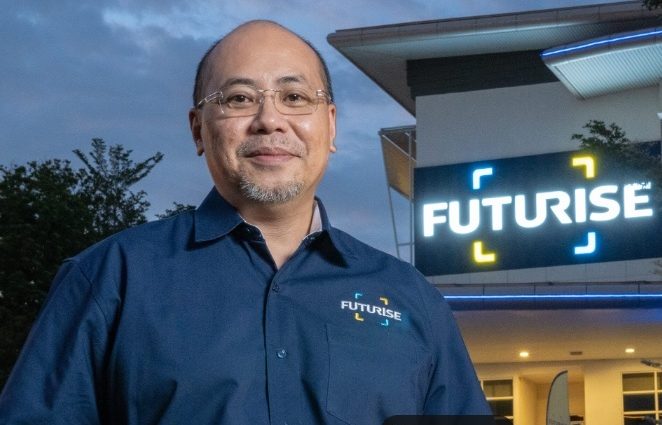- More stakeholders have asked for help with regulatory challenges faced
- Ecosystem still shows lack of awareness over existence and benefits of the NRS

 As the first quarter draws to an end in approximately two weeks and Muslims have started fasting in the holy month of Ramadan, I would like to reflect on some milestones in expediting innovation to strengthen Malaysia’s future economy.
As the first quarter draws to an end in approximately two weeks and Muslims have started fasting in the holy month of Ramadan, I would like to reflect on some milestones in expediting innovation to strengthen Malaysia’s future economy.
Set-up by the Ministry of Finance Malaysia in 2018, Futurise was mandated to spearhead the National Regulatory Sandbox (NRS) initiative, to provide solutions to regulatory challenges that can potentially hinder technology and innovation from operating efficiently in the market. The NRS initiative is meant to address industry and investor concerns that innovation faces challenges when deployed in the marketplace due to either the lack of, or at times, outmoded regulatory frameworks.
To a question that I get asked a lot, if I could put it in simpler terms, Futurise paves the ground for new and innovative ideas to operate in the market through safe testing of regulations and policies in a secured environment called a sandbox. The NRS brings together different groups like corporate organisations, government bodies, academia and entrepreneurs to solve regulatory challenges faced by innovative products and business models.
The existence of Futurise itself displays the commitment by the Malaysian Government to ensure that innovation within the economy can happen unhindered. In the complex national regulatory landscape across a multitude of industries and sectors, kinks in the framework can sometimes be efficiently addressed by a specialised outfit like Futurise that works closely with Government regulators and industry players to home in on specific pain points and expedite timely solutions.
The top-down approach used in yesteryears when prescribing regulatory frameworks may not be conducive to innovation. Futurise acts like a bridge, connecting different parts of the ecosystem – from regulators, industry players, organisations and relevant bodies. It is all about collaboration and ensuring that everyone can contribute to building a more innovative and advanced Malaysia.
Ultimately, Malaysia has taken significant steps in establishing a more dynamic innovation ecosystem. We are seeing ongoing NRS initiatives like the Autonomous Vehicle and Micromobility progressing steadily, while Futurise has gone into new areas like Sports Innovation, Digital Healthcare and Advanced Air Mobility or AAM. Meanwhile, our testbeds for autonomous vehicles and drone technology (Futurise together with the Civil Aviation Authority Malaysia created the nation’s first drone test zone in Cyberjaya) has seen a healthy rise in activity with increased testing by companies.
Yet, with the rapid pace of innovation taking place globally, there is always more new ground to cover on our shores. Did we encounter challenges? Most certainly. Stakeholder engagements can be complex, and understandably, sometimes emotions can run high.
Overcoming the challenges add a special sweetness to the NRS success—a journey all of us can appreciate, especially for the regulators and industry players involved. Despite the differences of opinions and individual objectives, we can find a common way forward as there is already a binding intention among all parties entering the sandbox to see innovation progress in the nation. That shared commitment tends to yield meaningful solutions.
Undoubtedly, the ecosystem has become more tightly knit than ever before too. This heightened cohesion is evident in the progress Futurise witnessed throughout 2023 as I share some highlights.
1. Advancing Malaysian Advanced Air Mobility
In March of 2023, Futurise, in collaboration with the Civil Aviation Authority of Malaysia (CAAM), introduced the Unmanned Aircraft System (UAS) certification (C-UAS) and Manned Electric Vertical Take-Off and Landing (eVTOL) aircraft national regulatory sandbox (Manned eVTOL NRS). This initiative, unveiled during the RegTalk series in Cyberjaya, aimed to balance public safety with industry needs, fostering an environment for innovative air mobility solutions in Malaysia.
The C-UAS ensured UAS compliance with CAAM’s regulatory standards within the sandbox, removing bureaucratic obstacles for companies.
The potential benefits of Advanced Air Mobility (AAM) include promoting faster, safer, and quieter transportation while reducing ground congestion.
CAAM CEO, Captain Norazman Mahmud underscored the importance of regulatory buy-in and experimentation to propel the local drone industry forward. The RegTalk session featured speakers discussing regulatory frameworks and the state of the drone landscape, fostering engagement and idea exchange among industry stakeholders.
This undertaking was a step forward and a resounding affirmation of Malaysia’s dedication to shaping a future where urban air mobility transcends conceptualisation to become a tangible reality.

2. Exploring emerging technologies for Malaysia’s competitiveness
Futurise teamed up with the Malaysian Industry-Government Group for High Technology (MIGHT) in May 2023 and formalised the collaboration through a Memorandum of Understanding (MoU) at the Langkawi International Maritime and Aerospace Exhibition 2023 (LIMA).
The collaboration, initiated with the AAM sector, seeks to address disruptions and enhance sectors like transportation and logistics. MIGHT’s role involves leveraging its experience in identifying business prospects, fostering partnerships, and contributing to high-tech development. The collaboration anticipates identifying key drivers for change, preparing for future opportunities, and mitigating potential risks.
Also, Futurise is developing the Advance Air Mobility in Malaysia industry report, a joint collaboration between Futurise and MIGHT, likely to be announced in the middle of this year (2024).
3. RegTalk on 3D printing
In 2022, the global 3D printing market was US$19.8 billion and is expected to reach up to US$67 billion by 2028, a CAGR of 21.4% during the 2023-2028 period. Clearly 3D printing plays a pivotal role in the ‘modernisation of printing’, which is currently not properly regulated in certain sectors.
Hence, in August 2023, Futurise organised its RegTalk discussion on “3D Printing – How it Should be Regulated,” addressing 3D printing industry challenges and opportunities. The event convened industry leaders and experts to explore the complex regulatory landscape of the burgeoning 3D printing industry.
Key issues such as legal concerns, regulatory impacts on industry development, and Malaysia’s global positioning in the 3D printing landscape were discussed with the recognition for a robust regulatory framework to balance innovation, security, and intellectual property protection.
RegTalk, a crucial initial phase within the NRS process, serves as an insightful and collaborative event for Futurise to scope out the breadth and depth of issues. Early feedback from regulators, ecosystem enablers, relevant ministries, agencies and industry players uncovers potential regulatory issues associated with the introduction of innovative products and services to the market.

4. MyAV Guidelines and Drone Sports Roadmap
Futurise, during the Cyberjaya Innovation Week 2023 held in September, introduced two groundbreaking initiatives, the MyAutonomous Vehicle 5.0 Guideline and the National Drone Sports Strategic Roadmap (NADSAR) 2023-2027.
It is expected that the Global Autonomous Vehicles Market will be worth US$325.9 billion by 2030. Furthermore, the Autonomous Vehicles (AV) Market is projected to expand at a CAGR of 47.1% through the 2021-2030 period.
Although the AV market in Southeast Asia is still in the infancy phase, a collaboration with the Ministry of Transport under the NRS established trial routes and safety standards for advancing AV solutions in Malaysia. To date, there are five AV trial routes in Malaysia, which are located in Cyberjaya, Putrajaya, Selangor, Johor and Kuala Lumpur, that play an important role in expediting the development of AV technology. Next year, it is expected that AV technology in Malaysia will enter the pre-commercialisation phase.
The NADSAR 2023-2027 (National Drone Sports Strategic Roadmap) meanwhile outlines the future of drone sports in Malaysia, focusing on youth engagement and skill development. Here, we are working closely with Sports Technology Malaysia Sdn Bhd, a subsidiary of Institut Sukan Negara mandated to accelerate sports technology adoption and creation.
Towards this end, Futurise was mandated by the Government in Jan 2022 to establish a National Drone Sports Excellence Centre (otherwise known by its Malay acronym AKSADRON), with the underlying objective of using the thrill-filled drone sports as a fertile ground to groom talent for the industry. To date AKSADRON, which was launched in March 2022, has formed partnerships with several universities such as Universiti Kebangsaan Malaysia (UKM), Universiti Teknologi Malaysia (UTM), UiTM and others to run drone sports development programs among the youth.
At the same time we have set up our Dronecubator programme with four universities namely, Universiti Malaysia Pahang (UMP), UKM, UTM and Universiti Sains Malaysia (USM). The programme aims to provide a platform for students at the university and secondary school levels to get initiated into drone sports and technology to develop their skills and knowledge in drone design, building, piloting and maintenance. This programme supports current STEM and TVET modules and seeks to boost the creation of drone sports pilots and technicians in the country.
One of Futurise’s supportive university partners under the Dronecubator initiative is Prof. Madya Ts. Dr Haryanti Mohd Affandi from UKM, who believes AKSADRON and the DroneCubator initiative to be a valuable resource for universities with the program allowing students to build their own drones and even earn part-time income by conducting events.
“By expanding this program to other institutions such as matriculations and vocational colleges related to TVET, the vision and mission of higher education can be achieved in the context of the 4th and 5th Industrial Revolutions,” said Haryanti.
Forging international partnerships to strengthen regulatory efforts
Last June, Futurise and the UAE Regulation Lab (RegLab), under the General Secretariat of the UAE Cabinet, signed an MoU to accelerate regulatory innovation and leverage each other’s technical knowledge and experience.
The partnership will also activate co-research activities on vital areas of common interest such as the design, development and management of regulatory sandbox programmes and open innovation platforms for numerous industries. Together with UAE RegLab, two RegTalk sessions were organised, participated by industry experts on various mobility topics, including a visit to Abu Dhabi Integrated Transport Centre.
As part of efforts to explore opportunities and collaboration within the aerospace ecosystem globally, Futurise participated in the Paris Air Show also in June of last year. A visit to Skyport’s AAM testbed was an eye opener to understand how the test bed operates and learn from it to be replicated in Malaysia. My team is still working on this.
Skyport is developing Europe’s first test vertiport (landing sites for eVTOL aircraft) in France, with an eye towards launching commercial AAM services in time for the 2024 Paris Olympics.
Challenges
The regulatory environment is often complex, and navigating through existing regulations to create a sandbox that is both permissive and protective can be challenging. It is important for regulatory authorities to be proactive in addressing these challenges to foster an environment that encourages innovation while safeguarding public interest and regulatory integrity.
Regular evaluations and adjustments to the sandbox framework can help address emerging challenges effectively.
Another key challenge that we have observed in Futurise, is the lack of awareness among potential participants, businesses, and the public about the existence and benefits of the regulatory sandbox. This limits participation in and dampens the impact of any outcome from our sandbox engagements. We are aware that effective communication and outreach are most essential to address this challenge.
Another challenge is in streamlining and coordinating with international regulatory bodies, aligning sandbox practices with global standards, especially when dealing with cross-border innovations.
Looking ahead
As Futurise reflects on its achievements, we look forward to the rest of the year. There will be more to do no matter what uncertainties lie in the global economy in the coming years. Already more stakeholders have approached Futurise for help to addressing regulatory challenges faced by them.
We have seen innovation remain persistent in both favourable and tough conditions. In fact, it’s been seen that challenging market situations can give rise to new technology driven solutions, products or ways business is conducted.
The strategic collaborations, innovative initiatives, and commitment to agile regulatory frameworks position Futurise as a driving force in Malaysia’s innovation landscape. The resolve is depicted by a sign outside the Futurise meeting room: “The Future Economy starts Here. Step inside.” Do join us to shape a stronger innovative future for Malaysia.
Rosihan Zain Baharudin is CEO of Futurise Sdn Bhd.

